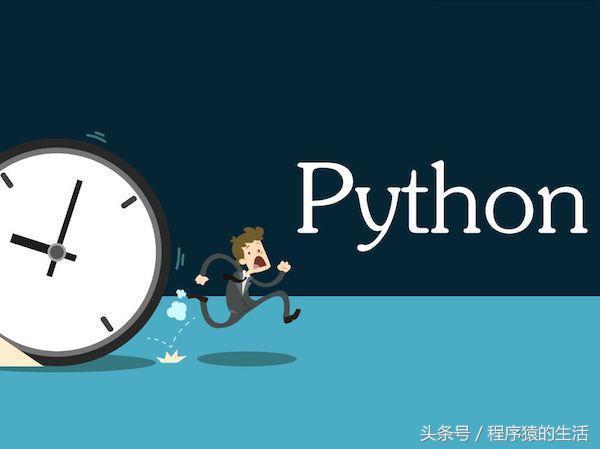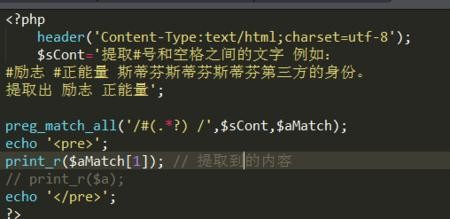Recommended basic introductory tutorials on subexpressions
What is capture? After using parentheses to specify a subexpression, the text matching this subexpression (that is, the matched content) can be used in expressions or other processes. The following article mainly introduces the capture in Python regular expressions. For relevant information, friends in need can refer to it. Preface In the previous article, we introduced the basics of Python regular expressions, so in this article, we will summarize the usage of regular expressions for capture. Not much to say below, let’s take a look at the detailed introduction. Capture Capture and grouping are closely related in regular expressions. Generally speaking, grouping is capturing and is done with parentheses (therefore, parentheses are also special characters in regular expressions and need to be escaped when expressing the original meaning) : (…) out ‐ ‐ ‐ ‐ ‐ (…)
#Introduction: What is capture? After using parentheses to specify a subexpression, the text matching this subexpression (that is, the matched content) can be used in expressions or other processes. The following article mainly introduces the capture in Python regular expressions. For relevant information, friends in need can refer to it.
 2. Subexpression, subexpression count, branch usage analysis (regular expression)
2. Subexpression, subexpression count, branch usage analysis (regular expression)
Introduction: Subexpressions It is often useful to separate an expression into several subexpressions. For example, it can mean "At least one of these strings needs to be exactly Match." This can be done using parentheses, in the same way as in mathematical expressions. For example: (very) *larg...
 3. Learning Basics of Python String Processing
3. Learning Basics of Python String Processing
Introduction: Python string processing String input: my_string = raw_input("please input a word:") String judgment: (1) Determine whether it is a pure letter my_string .isalpha() string search matching: (1) rere regular expression example 1: ^[\w_]*$ First, \w means matching any word character including an underscore, which is equivalent to '[A-Za-z0-9_ ]'. Then I followed _. Look at the * sign again: Match the previous subexpression
 4. Python regular expression: Capture article
4. Python regular expression: Capture article
Introduction: What is capture? After using parentheses to specify a subexpression, the text matching this subexpression (that is, the matched content) can be used in expressions or other processes. The following article mainly introduces the capture in Python regular expressions. For relevant information, friends in need can refer to it.
 5. C# How to detect which numbers are in a string?
5. C# How to detect which numbers are in a string?
Introduction: //Regex.Matches method: Search for all regular expressions in the input string matches and returns all matches. // Match the previous character or subexpression one or more times. Equivalent to {1,}. If you remove the +, it is
 6. Regular Expression Tutorial: Subexpression Usage Analysis
6. Regular Expression Tutorial: Subexpression Usage Analysis
Introduction: This article mainly introduces the usage of subexpressions in the regular expression tutorial, and analyzes the concept, function and usage of subexpressions in regular expressions. Friends who need it can Please refer to

##Introduction: Regular expression use : Common rules: 1. Commonly used special characters: $ matches the end of the input string. If the RegExp object's Multiline property is set, $ also matches '\n' or '\r'. To match the $ character itself, use \$. ( ) marks the beginning and end of a subexpression. Subexpressions can be obtained for later use. To match these characters, use \( and \). * Matches the preceding subexpression zero or more times. To match...
8. preg_replace replacement value has a subexpression value plus a numerical problem
Introduction: preg_replace replacement value has the problem of subexpression value plus numerical value
9. Summary of characters that need to be escaped in PHP regular expressions
Introduction: A summary of some characters that need to be escaped in PHP regular expressions is as follows: 1. $ Special Characters Comment $ Matches the end of the input string. To match the $ character itself, use $. two, ( ) ( ) marks the beginning and end of a subexpression. Subexpressions can be captured for later use. To match these two characters, use ( and ). three, * * Zero or more matches
10. Problems related to back references of php regular expressions
Introduction : Backreference problem with php regular expressions? Theoretical questions: What I know about the backreference subexpression is: 1 Represents the value that refers to the first subexpression Later, I accidentally saw someone quoting it like this: ${1} is very ignorant. It can be used, but no relevant documentation can be found. Please give advice from an expert
[Related Q&A recommendations]:
javascript - Problems with regular expression match method in js
javascript - Regular expression novice solver?
javascript - Does regular expression in js support conditional matching?
javascript - What is a RegExpObject subexpression?
c++ - How to express that the subexpression in the conditional expression does nothing?
The above is the detailed content of Recommended basic introductory tutorials on subexpressions. For more information, please follow other related articles on the PHP Chinese website!

Hot AI Tools

Undresser.AI Undress
AI-powered app for creating realistic nude photos

AI Clothes Remover
Online AI tool for removing clothes from photos.

Undress AI Tool
Undress images for free

Clothoff.io
AI clothes remover

AI Hentai Generator
Generate AI Hentai for free.

Hot Article

Hot Tools

Notepad++7.3.1
Easy-to-use and free code editor

SublimeText3 Chinese version
Chinese version, very easy to use

Zend Studio 13.0.1
Powerful PHP integrated development environment

Dreamweaver CS6
Visual web development tools

SublimeText3 Mac version
God-level code editing software (SublimeText3)

Hot Topics
 1376
1376
 52
52
 How to solve the permissions problem encountered when viewing Python version in Linux terminal?
Apr 01, 2025 pm 05:09 PM
How to solve the permissions problem encountered when viewing Python version in Linux terminal?
Apr 01, 2025 pm 05:09 PM
Solution to permission issues when viewing Python version in Linux terminal When you try to view Python version in Linux terminal, enter python...
 How to efficiently copy the entire column of one DataFrame into another DataFrame with different structures in Python?
Apr 01, 2025 pm 11:15 PM
How to efficiently copy the entire column of one DataFrame into another DataFrame with different structures in Python?
Apr 01, 2025 pm 11:15 PM
When using Python's pandas library, how to copy whole columns between two DataFrames with different structures is a common problem. Suppose we have two Dats...
 What are some popular Python libraries and their uses?
Mar 21, 2025 pm 06:46 PM
What are some popular Python libraries and their uses?
Mar 21, 2025 pm 06:46 PM
The article discusses popular Python libraries like NumPy, Pandas, Matplotlib, Scikit-learn, TensorFlow, Django, Flask, and Requests, detailing their uses in scientific computing, data analysis, visualization, machine learning, web development, and H
 How does Uvicorn continuously listen for HTTP requests without serving_forever()?
Apr 01, 2025 pm 10:51 PM
How does Uvicorn continuously listen for HTTP requests without serving_forever()?
Apr 01, 2025 pm 10:51 PM
How does Uvicorn continuously listen for HTTP requests? Uvicorn is a lightweight web server based on ASGI. One of its core functions is to listen for HTTP requests and proceed...
 How to dynamically create an object through a string and call its methods in Python?
Apr 01, 2025 pm 11:18 PM
How to dynamically create an object through a string and call its methods in Python?
Apr 01, 2025 pm 11:18 PM
In Python, how to dynamically create an object through a string and call its methods? This is a common programming requirement, especially if it needs to be configured or run...
 How to teach computer novice programming basics in project and problem-driven methods within 10 hours?
Apr 02, 2025 am 07:18 AM
How to teach computer novice programming basics in project and problem-driven methods within 10 hours?
Apr 02, 2025 am 07:18 AM
How to teach computer novice programming basics within 10 hours? If you only have 10 hours to teach computer novice some programming knowledge, what would you choose to teach...
 How to handle comma-separated list query parameters in FastAPI?
Apr 02, 2025 am 06:51 AM
How to handle comma-separated list query parameters in FastAPI?
Apr 02, 2025 am 06:51 AM
Fastapi ...
 What are regular expressions?
Mar 20, 2025 pm 06:25 PM
What are regular expressions?
Mar 20, 2025 pm 06:25 PM
Regular expressions are powerful tools for pattern matching and text manipulation in programming, enhancing efficiency in text processing across various applications.




